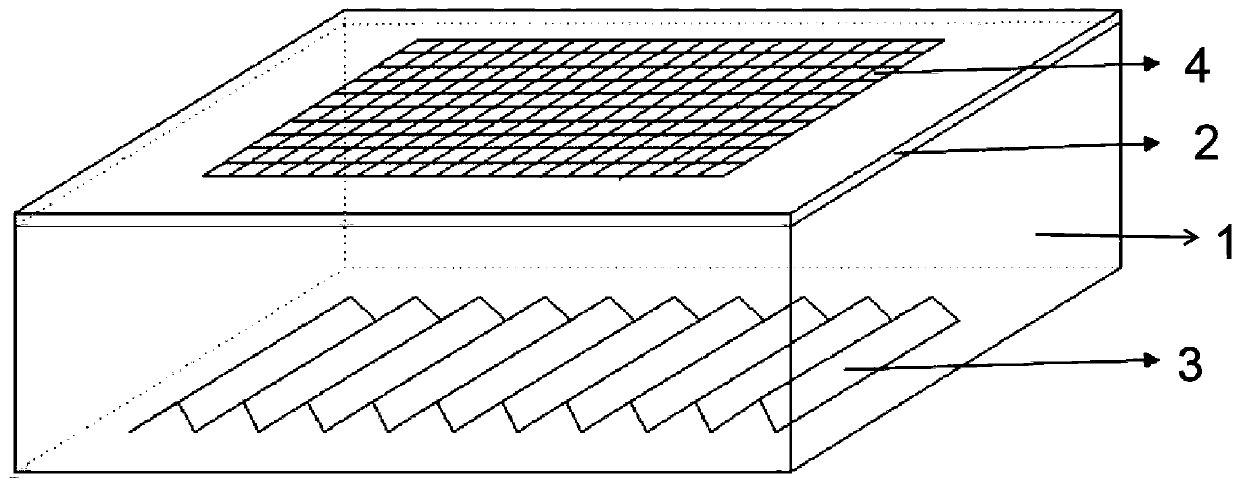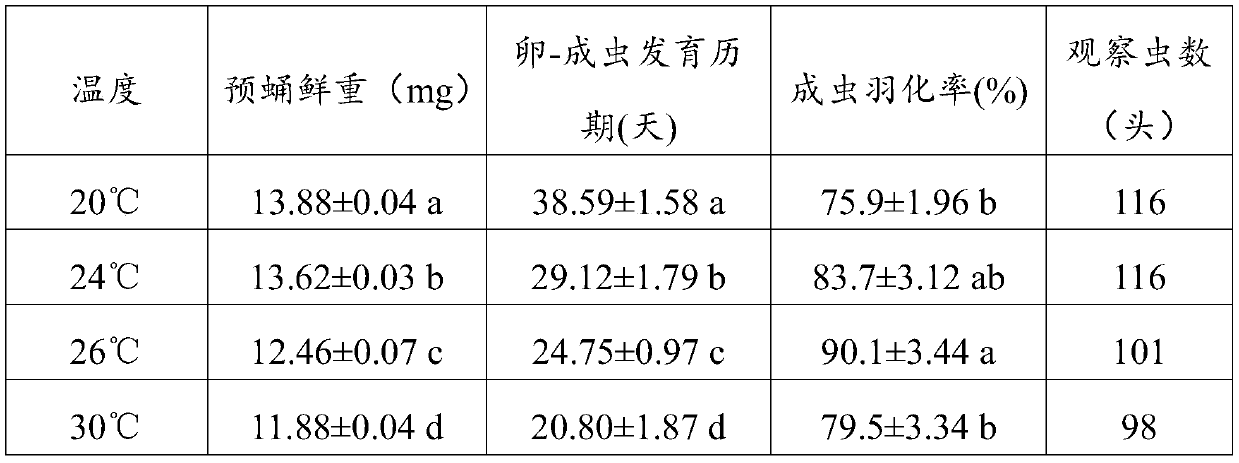Method for feeding chrysopa formosa by megoura japonica
A technology of lacewings and peas, which is applied in the field of biological control of agricultural pests, can solve problems such as food safety, increased use of pesticides, and enhanced resistance of aphids to achieve the goals of protection from damage, short propagation cycle, and increased yield Effect
- Summary
- Abstract
- Description
- Claims
- Application Information
AI Technical Summary
Problems solved by technology
Method used
Image
Examples
Embodiment 1
[0057] Embodiment 1 The screening of lacewing substitute prey
[0058] 1.1 Effects of different aphid species on the growth and development of Lacewing
[0059] Under the conditions of indoor temperature of 26±1℃ and photoperiod of 16L:8D (16 hours of daytime light and 8 hours of darkness at night), the effects of Prunus pea, soybean aphid Aphis glycines and green peach aphid Myzus persicae on the growth and development of lacewings were determined respectively. , to screen out aphid species suitable for large-scale expansion of Lacewings.
[0060] The experimental method is as follows: 26°C, 16L:8D conditions to collect the first eggs of Lacewings (within 24h), put the eggs in a rearing box with corrugated filter paper strips on the bottom, repeat 3 times for each treatment, and Repeat for 60 eggs. The eggs were incubated under the above-mentioned experimental treatment conditions. After the eggs hatched, a sufficient amount of aphids were added to feed each day until the l...
Embodiment 2
[0067] The large-scale propagation of embodiment 2 pea aphid
[0068] 2.1 Host plant cultivation
[0069] After screening, the broad bean variety that is the natural king was selected as the host plant for the expansion and propagation of pea aphids. Excellent host plants for aphids.
[0070] The specific steps of using broad bean seedlings to raise aphids on a large scale are as follows: 24-hole seedling pots (30 × 20 × 10 cm) were placed under the conditions of 25 ± 1 °C indoors and a photoperiod of 16 L: 8 D (16 hours of light during the day and 8 hours of darkness at night). Put the sterilized vermiculite inside, the thickness of the vermiculite is about 2.5cm, flatten the vermiculite to make it slightly compact, screen a large and plump broad bean seed and sprinkle it evenly on the vermiculite, each pot is divided into 600cm 2 The ratio of sowing 200-220 grains of broad beans is carried out to raise seedlings, and evenly spread a layer of vermiculite with a thickness of...
Embodiment 3
[0075] The scale propagation of embodiment 3 Lacewing
[0076] 3.1 Effects of different temperatures on the growth and development of Lacewings
[0077] In order to determine the suitable temperature for the scale expansion of C. lacewing, the effects of temperature 20°C, 24°C, 26°C, and 30°C on the developmental period, pupation rate, adult eclosion rate and Effect of cocoon weight.
[0078] The experimental method is: under the conditions of 26±1°C and 16L:8D, collect the first-laid eggs (within 24 hours) of Lapis lacewings, put the eggs in a rearing box with corrugated filter paper strips on the bottom, and repeat 3 times for each treatment. times, 60 eggs per repetition. The eggs were incubated under the above-mentioned temperature treatment conditions. After the eggs hatched, a sufficient amount of aphids were added to feed each day until the larvae formed cocoons, and the cocoons were collected every day and placed in a petri dish (9×1.5 cm). The time required to deve...
PUM
| Property | Measurement | Unit |
|---|---|---|
| Thickness | aaaaa | aaaaa |
Abstract
Description
Claims
Application Information
 Login to View More
Login to View More - R&D
- Intellectual Property
- Life Sciences
- Materials
- Tech Scout
- Unparalleled Data Quality
- Higher Quality Content
- 60% Fewer Hallucinations
Browse by: Latest US Patents, China's latest patents, Technical Efficacy Thesaurus, Application Domain, Technology Topic, Popular Technical Reports.
© 2025 PatSnap. All rights reserved.Legal|Privacy policy|Modern Slavery Act Transparency Statement|Sitemap|About US| Contact US: help@patsnap.com



